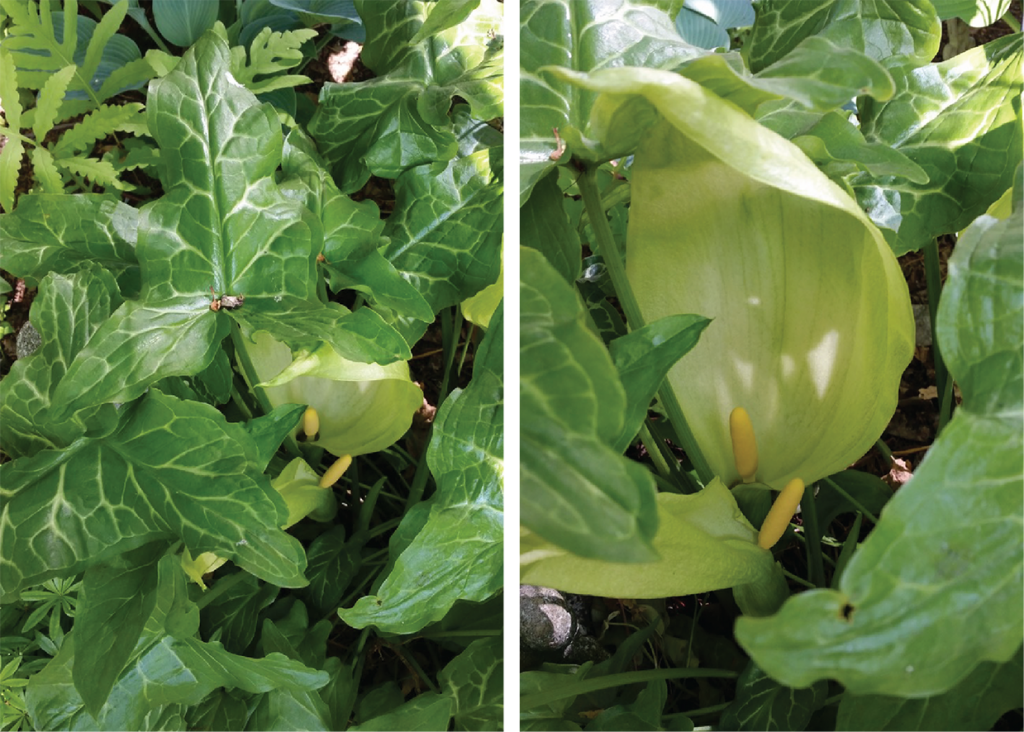Most plants from temperate regions die back in fall and grow again in spring. Not so the Italian arum (Arum italicum). This plant is currently nice and green.
If it does not get too cold, these attractive leaves will survive the winter.
As the name suggests, this plant comes from Europe and is native to Italy, but also to other countries, like England and the Netherlands. It was introduced to America as an ornamental and grows well in the shade. We got an Italian arum several years ago at the plant sale of the Rock Garden Society and planted it under the apple tree.
Last year, our Italian arum bloomed at the end of May. Like other species in the arum family, the small flowers are arranged on a finger-like “spadix” that is ensheathed by a light green leaf, the “spathe”.
when the flowers are pollinated, the spathe dries up and the flowers develop into berries. These begin to turn bright red in July. By this time, all leaves of the plant have died back. This is nice, because they make room for hostas, ferns and coleus. The berries are popular with birds like robins. Mammals, including people, should not eat them, though. Like the rest of the plant, these pretty berries are poisonous.
After the berries are gone, the Italium arum is invisible until new leaves begin to emerge in fall.
Come December, not much else is green under the apple tree.




